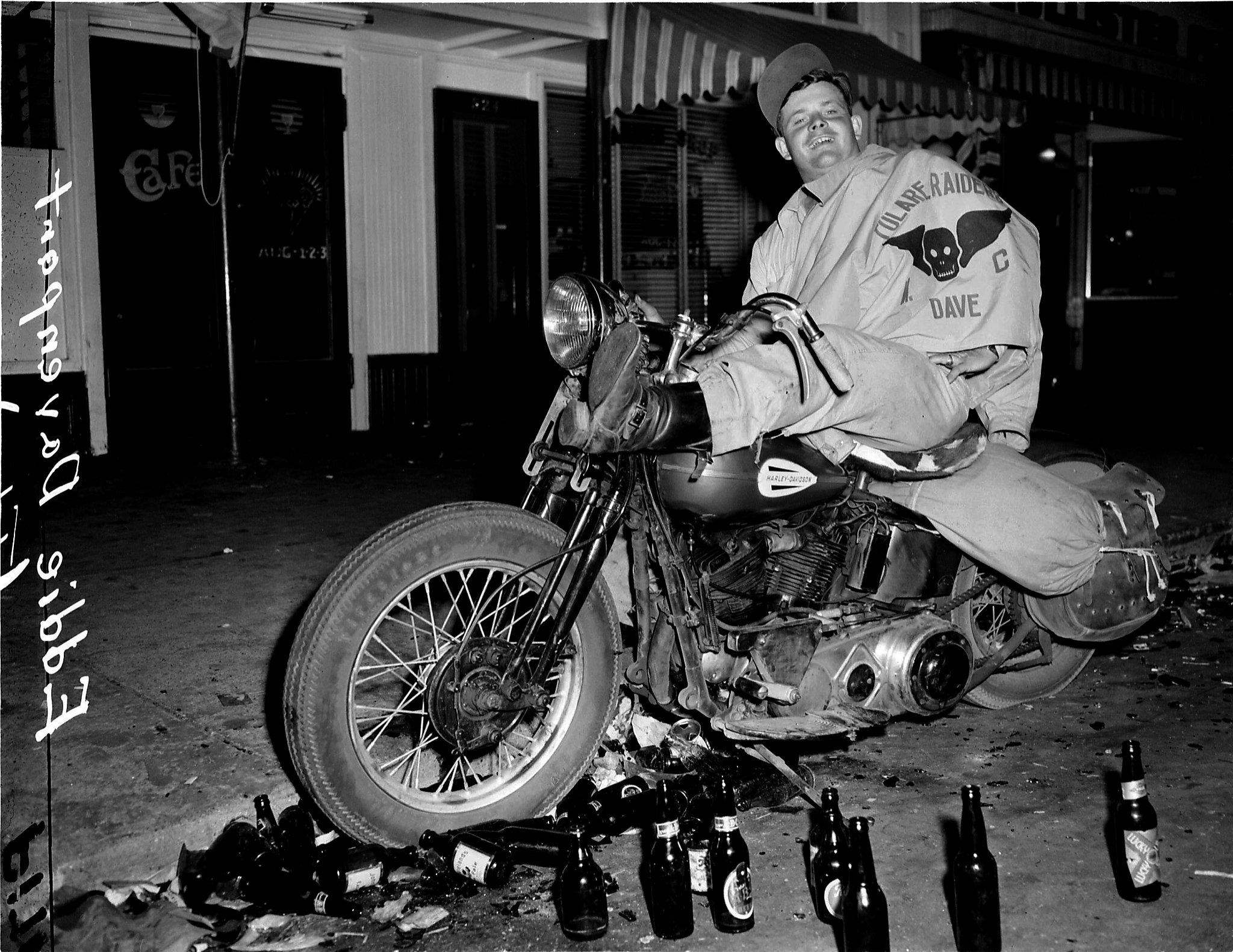Good ol’ Eddie ‘Dave’ Davenport from the Tulare Raiders on the borrowed Harley with all those smashed beer bottles. It’s the image from photographer Barney Peterson that launched a thousand motorcycle clubs, and upset an infinite nest of America’s letter writing moral guardians. It also spawned a multitude more twenty first century ‘think pieces’ about how the whole event was a tabloid beat-up by Time magazine – and a beat-up that couldn’t have done it’s job more effectively. The fact that it wasn’t much more than a large, post-war party with a few unruly riders (and, erm, Raiders) has been well established. But enough of what it wasn’t. What, in fact, was it?
Far from being the moral downfall of the entire country, any casual observer looking over the old photos of the event can’t help but notice two key aspects of them that should stick out like sore gear fingers to modern eyes; it’s the abundance of female bike riders that were present and the fact that the crowd in attendance weren’t just any drunken miscreants. Instead, they were the regular busted knuckle, dirty fingernailed guys who had just saved the whole damn world.
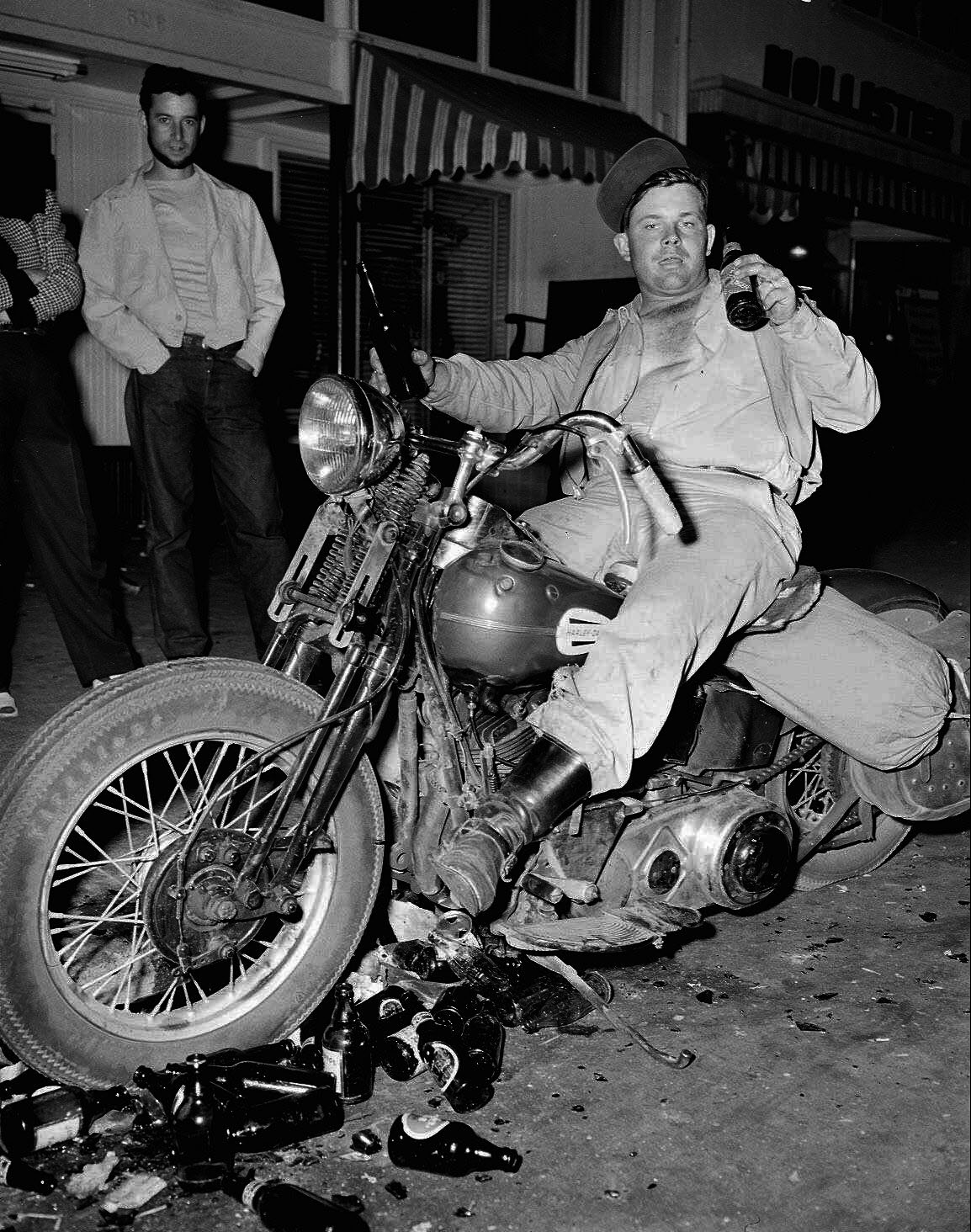
Doing A Man’s Job
The abrupt and revolutionary shift that America’s women had to make to ensure their local factories keep rolling out the hardware of war – or even their daily loaves of fresh bread – has been widely discussed. The famous “Rosie the Riveter” poster saw to that; America’s women kept the home fires burning in more ways than anyone could imagine in the times after the country’s young men boarded the boats en masse for foreign, war-torn lands.
The country’s realisation that women could hold their own in the smelters, metal shops and production lines of the nation’s crucial industrial sectors gave them a new-found freedom; this unexpected breadwinning, decision-making status afforded them the ability to make their mark on society and call the shots on a level they’d never before experienced.
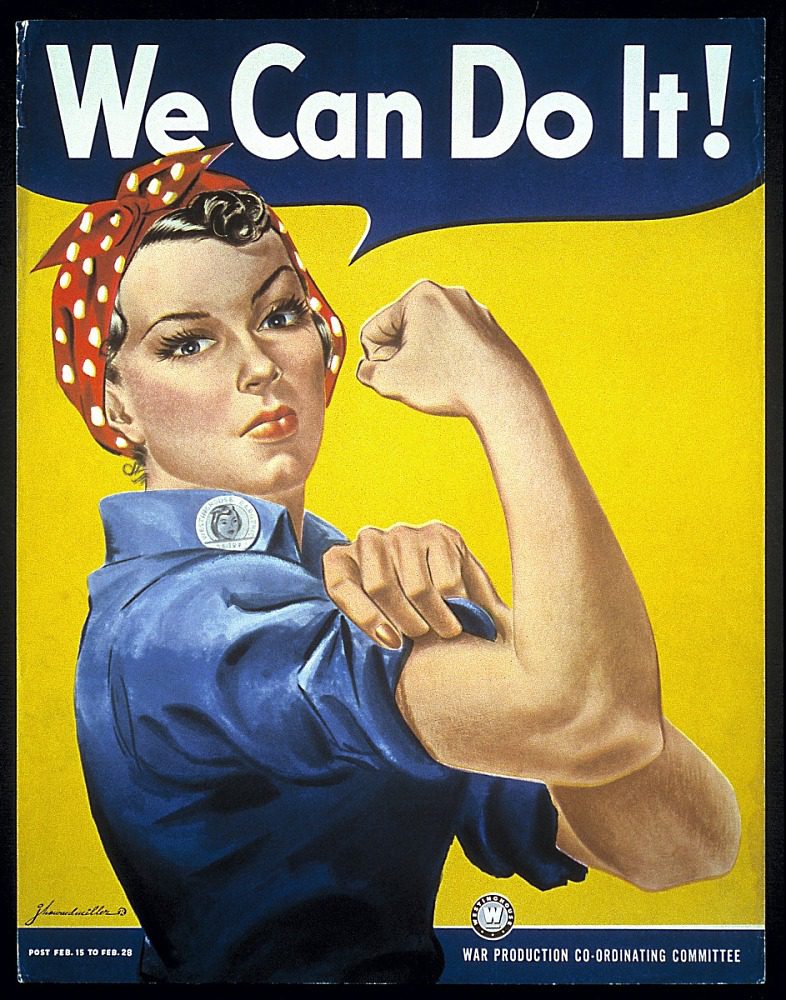
So many women – both with husbands overseas and by association many of those without – suddenly found themselves with life options that they’d never had before. How would they spend the household income? How would they plan their days and what would they do on their weekends? Decisions, decisions. And all without the restraints previously imposed on them by ‘social norms’ or the assumption that their husbands would simply make all the decisions for them.
In a similar fashion, women asked to do ‘men’s work’ quickly found that while hot and often dirty, the stereotypes of metalwork and foundry tasks – along with a raft of other jobs – being beyond the ‘fairer sex’ were just not true. Indeed, reports of production numbers being equalled or even surpassed by female workforces were commonplace across wartime America, helped in large part by the fact that they were now working for Uncle Sam.
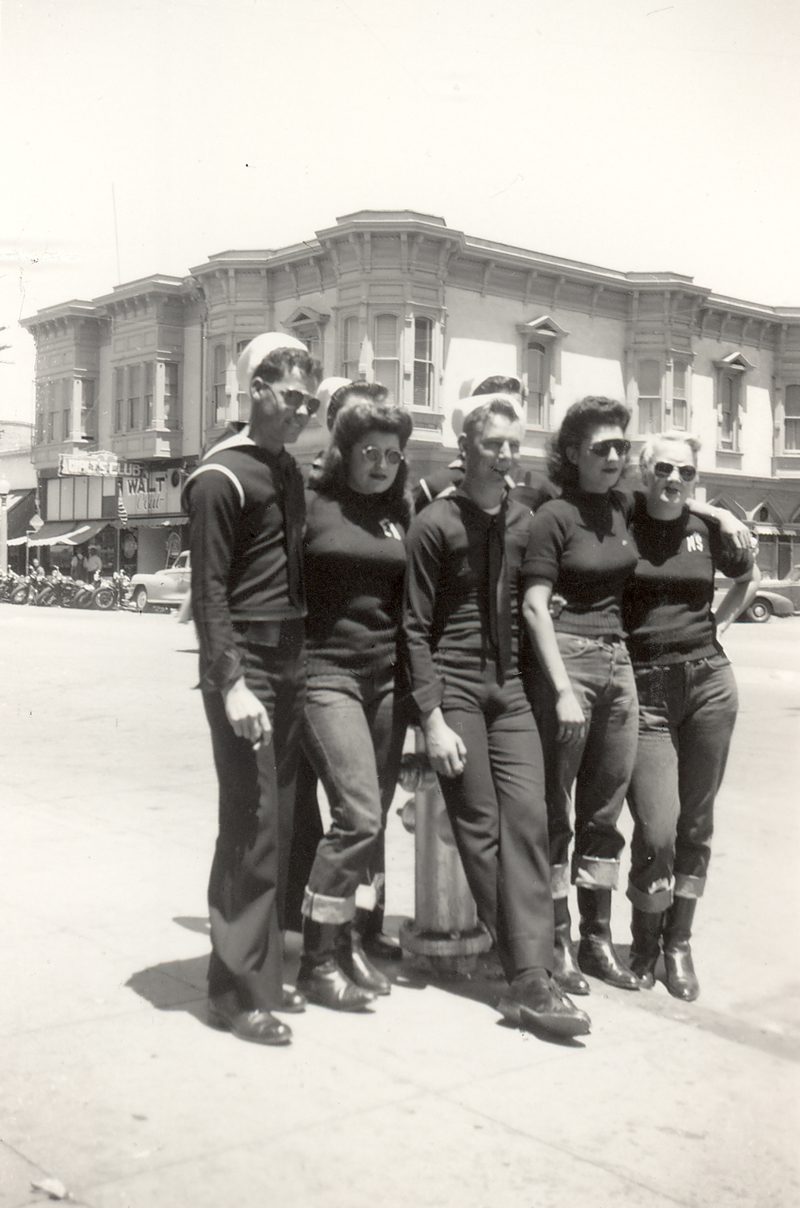
The Tracy Gear Jammers
The not-so-surprising upshot to all this female empowerment is that many, many photos from that Fourth of July weekend in 1947 show women bikers in the thick of it. Specifically, a local club of all-women motorcyclists called ‘The Tracy Gear Jammers.’ Here they are, giving as good as they got and posing in groups with sailors and other male servicemen just like the men would do in turn.
Take a moment to let that sink in. Females on their own bikes and in their own clubs at what the media would have us believe was some kind of drunken demolition of America’s social fabric. Fast forward to 2021, and I’d dare say that something like this would still turn heads to this day. Women on bikes! Is that even legal? And here we are, supposedly #postfeminism and post #metoo and still an all female motorcycle club is enough to turn heads, and raise eyebrows. Tell me again how far society’s come in the 70-odd-years since Hollister?
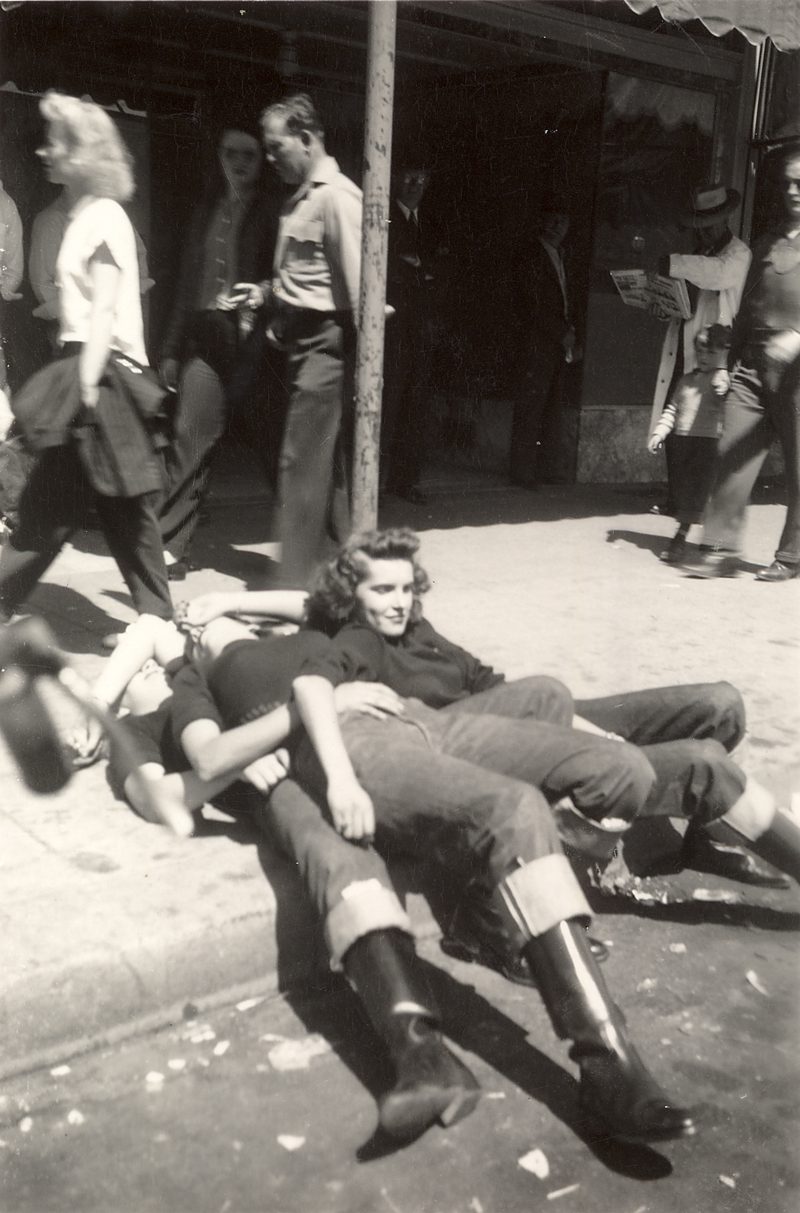
Hooligan’s Heroes
The other stand-out of the event that’s often overlooked is the social standing of those present. Yes, returned male soldiers made up a vast majority of those in attendance, but it’s important to note that men from all walks of life fought in the war. From the most wealthy Americans to those below the poverty line, the call to defend the country was answered by a vast cross section of society. And did this same cross section of society rock up in Hollister on bikes? No, they did not.
Needless to say, the wealthy ‘officer class’ had ready access to motorcycles before the war; as a form of personal transportation that doesn’t allow you to carry many kids, groceries, or tools of the trade, motorcycling was clearly biased towards those who could afford to own multiple vehicles. And unless you were a cop, a bike mechanic or a motorcycle messenger, a second vehicle in the family that was mostly for personal entertainment probably wasn’t so high on your pre-war shopping list.
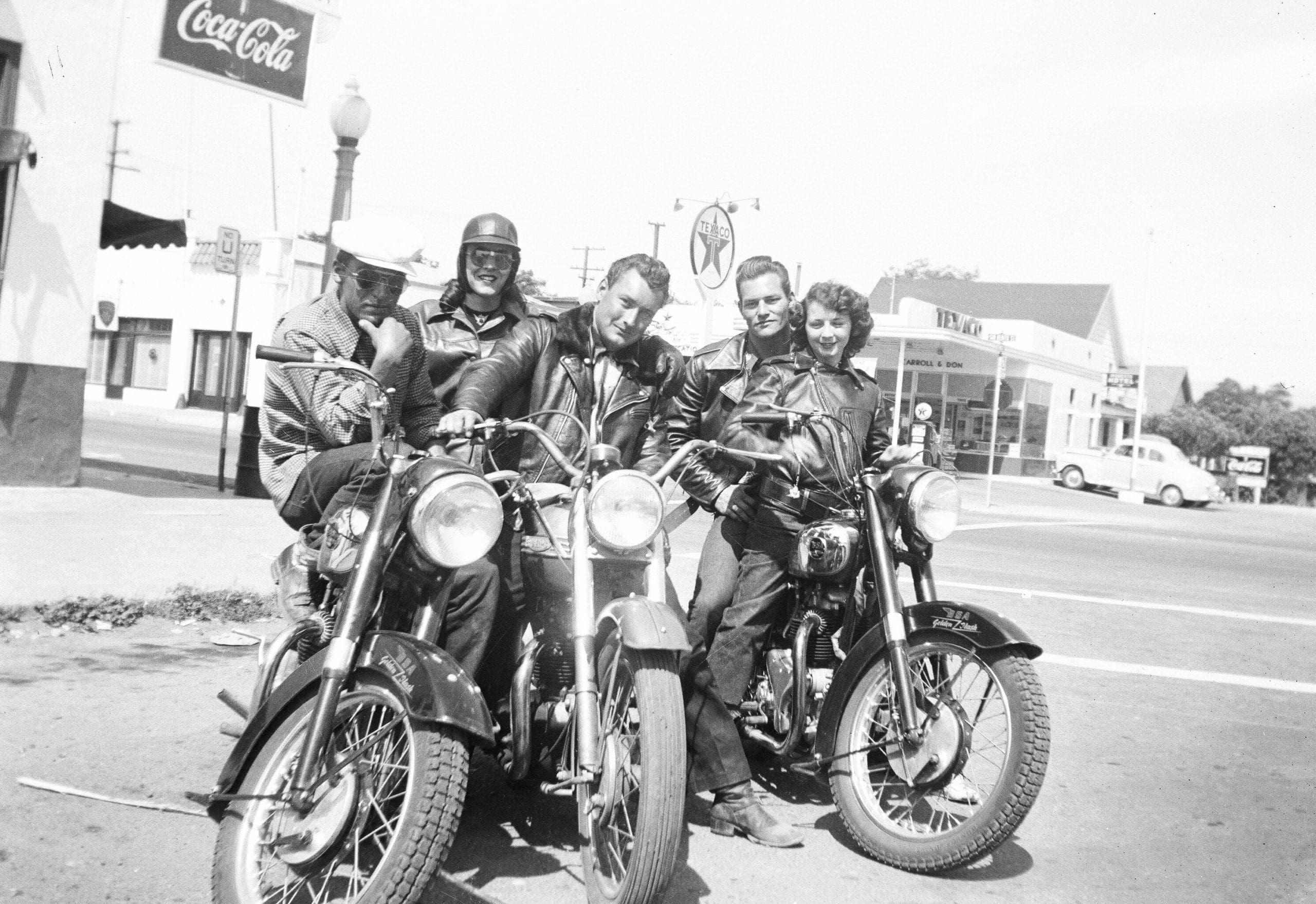
Meanwhile, the white-scarved men of ‘independent means’ had been savoring the pleasures of riding for decades. Just think of Lawrence of Arabia on his famous Brough Superior. As attractive as that mental image is, getting around on a Brough in the pre-war era would be equivalent to you or I riding a Confederate Fighter or a Ducati Desmosedici today. Hardly the kind of bikes in reach of regular joes or likely to encourage mass moto participation, are they?
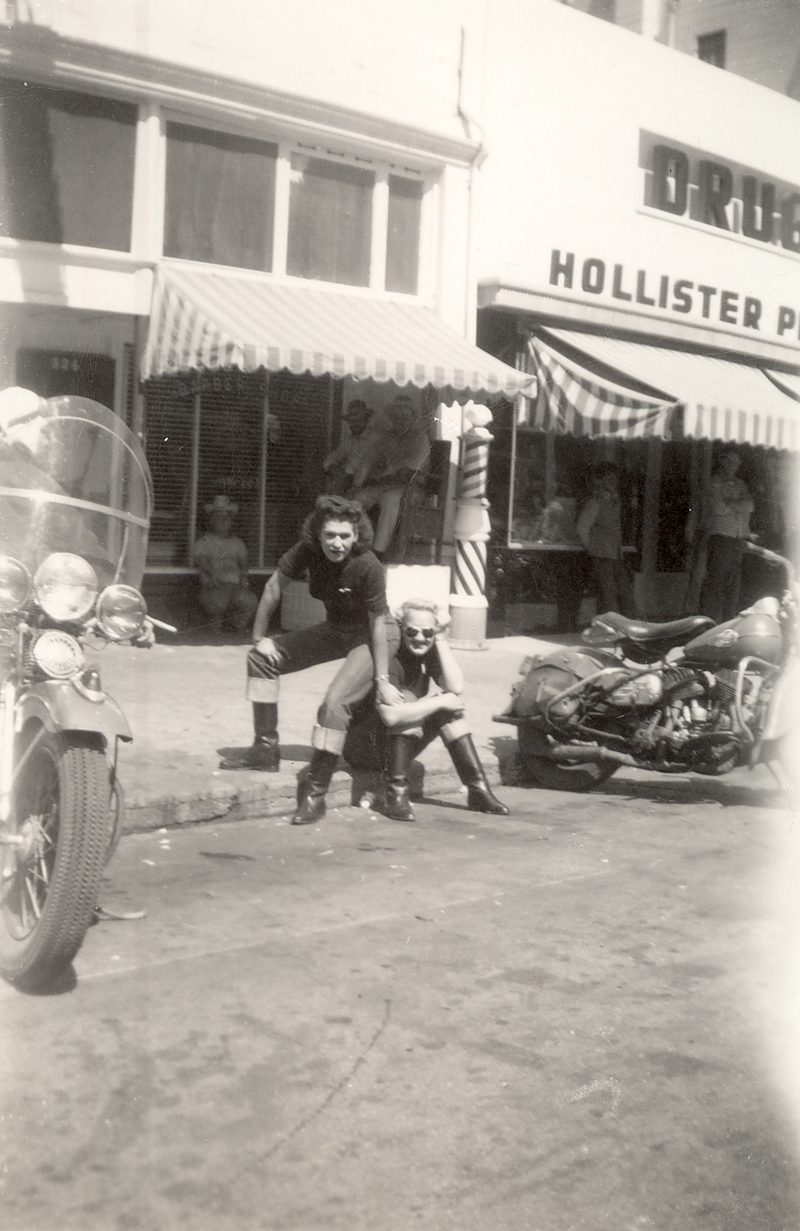
Riding as Therapy
But jump forward to the post-war years and – hey presto – the US Armed Forces are flooding the market with well-serviced, ex-army bikes to a whole bunch of returned soldiers with pockets full of army pay and newly-empowered women who now had control of their household’s finances and a paying job, to boot. Soon missing their buddies, the soldiers figured that a cheap motorcycle from the surplus store would be a swell way to catch up on weekends. And failing that, look at all those barely-used pre-war bikes in the classifieds!
Using motorcycles to stave off the double kick in the family jewels of post-traumatic stress from the war and returning to a life where they had to dig ditches instead of saving the world from Nazis, these working class heroes were now sure – more than ever before – that when you needed a tough job to be done, it was them and no-one else that was going to do it. And the rest of American knew it, too.
That hero-status afforded to veterans persists to this very day, and rightly so. Just how much real uproar occurred in Hollister after the weekend in question? And just how short tempered would the average American be with the guys who sent Emperor Hirohito packing letting off a bit of steam, you think? The fact that the town welcomed back the riders in subsequent years should be evidence enough to refute the sensationalism.
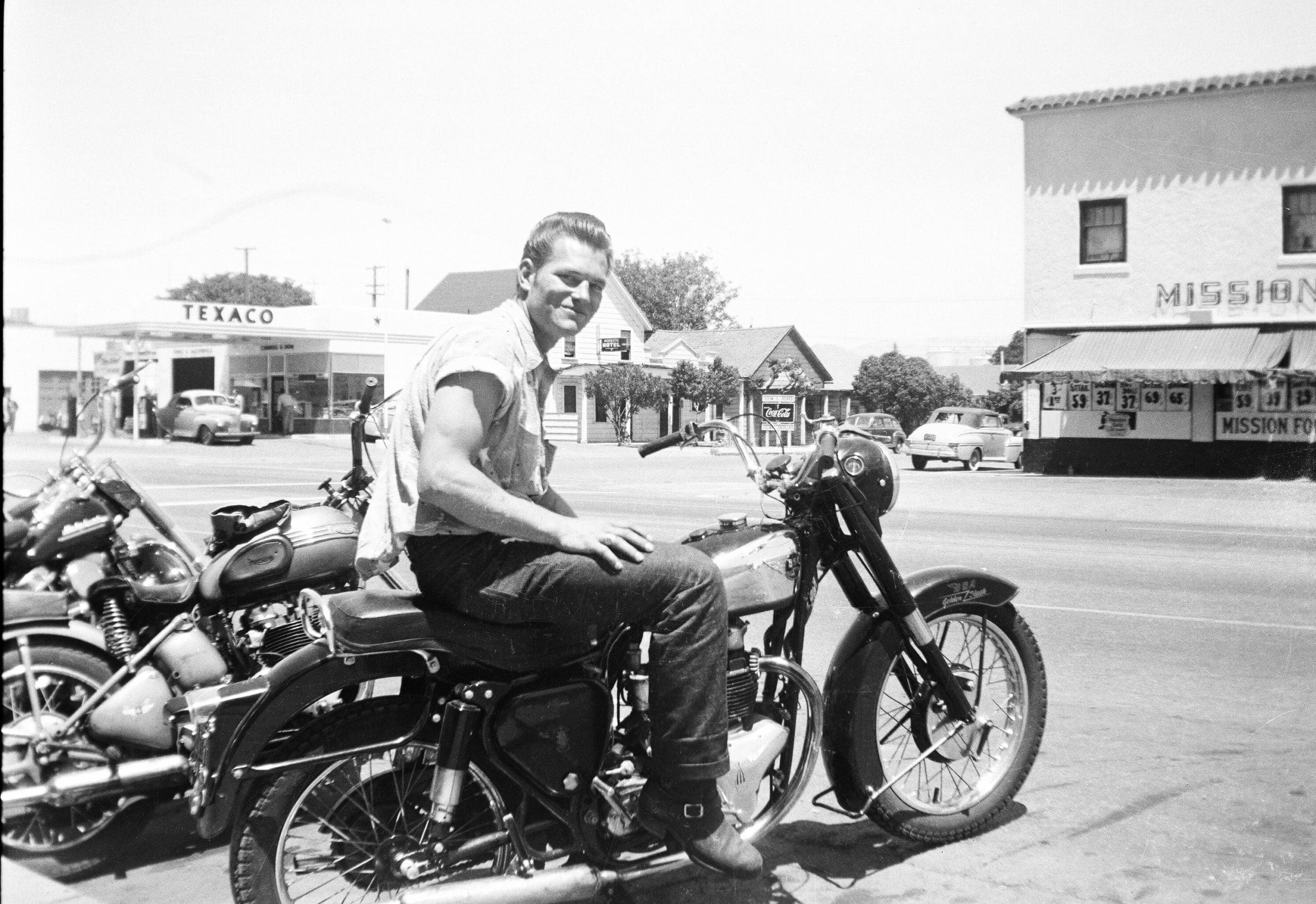
So while the Hollister ‘riots’ were not the Lord of the Flies nightmare that Life magazine would have you believe, they were vital in shaping the world we know today in more important, more impactful ways than most of us have ever considered. They were the launch pad for both mainstream female bikers and the birth of widespread, grassroots motorcycling that was accessible by all classes in society and not just those with the spare cash to do so.
So when you’re next on a modern, ton-upping bike that didn’t cost you the price of a small house and you see a woman ride past with a big grin on her face, know that the both of you owe the regular men and women that partied in Hollister on that warm July weekend more than just a casual pat on the back. Put simply, you owe them modern motorcycling in its entirety.


